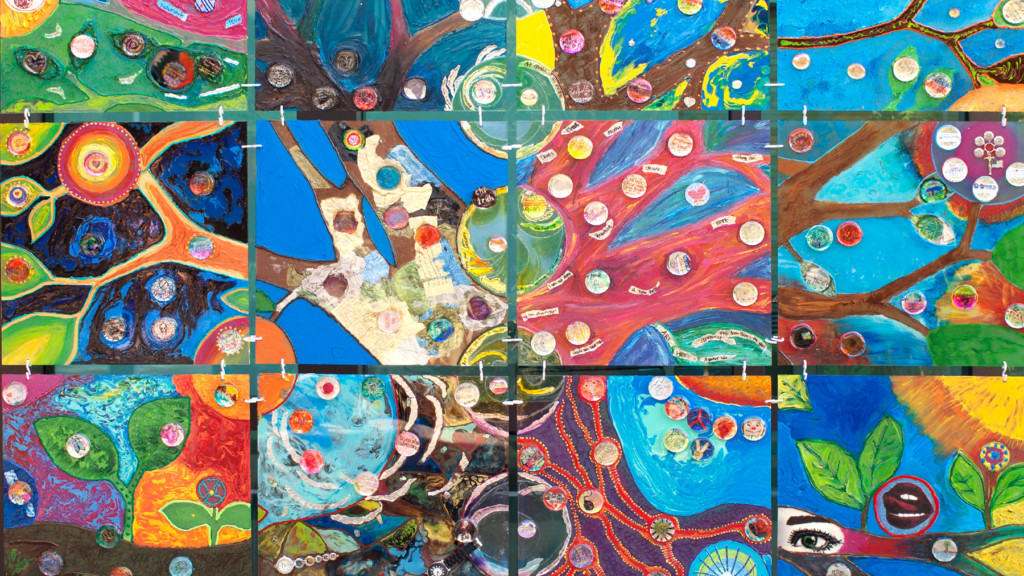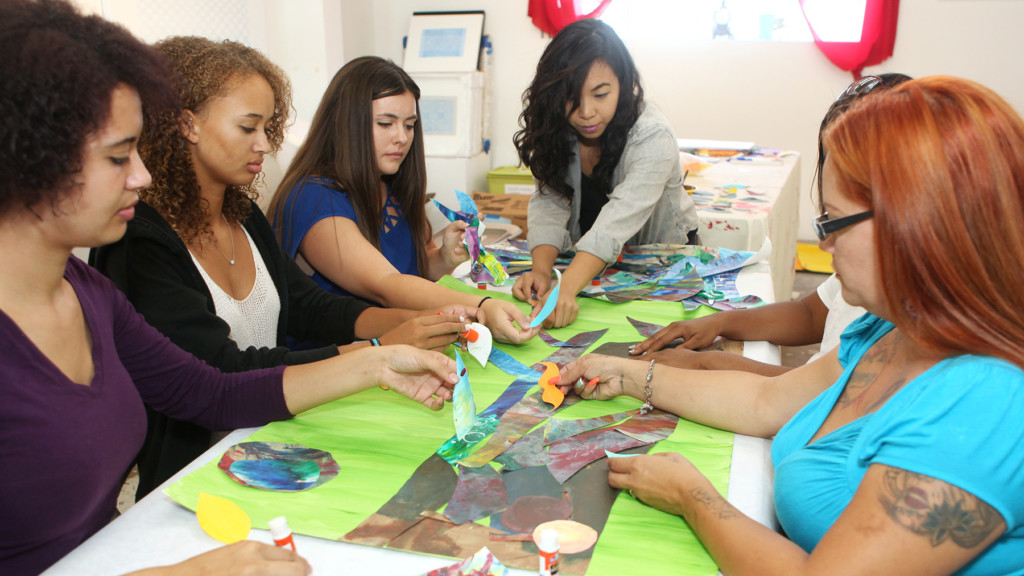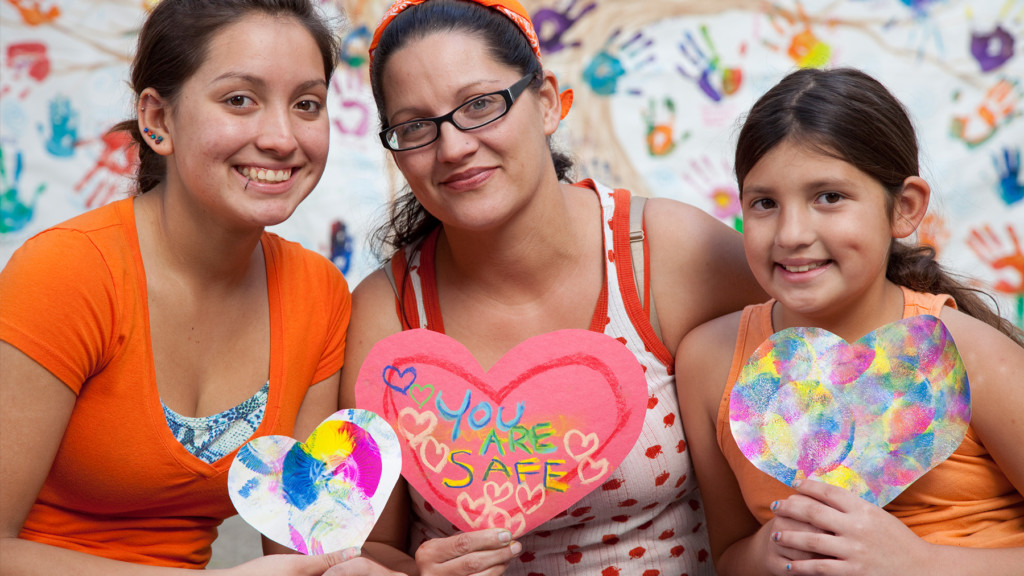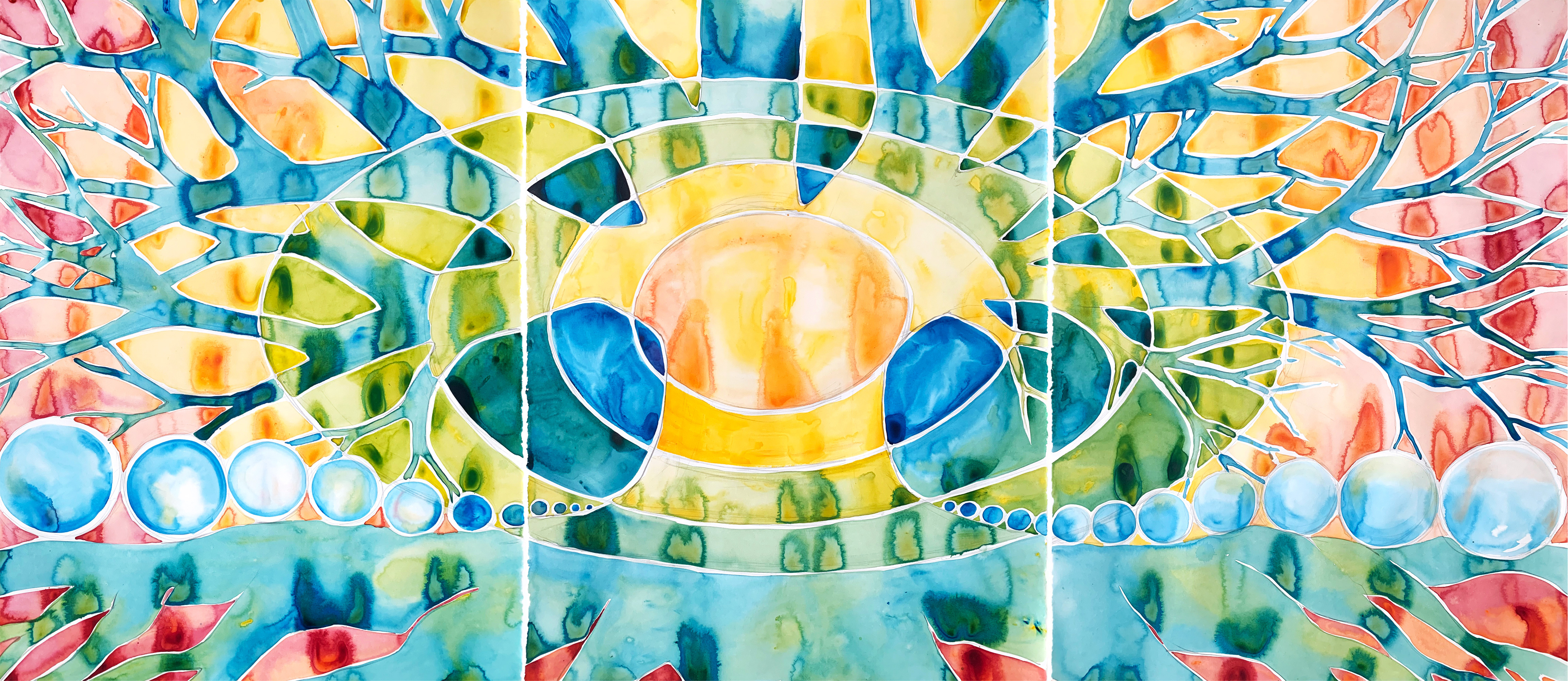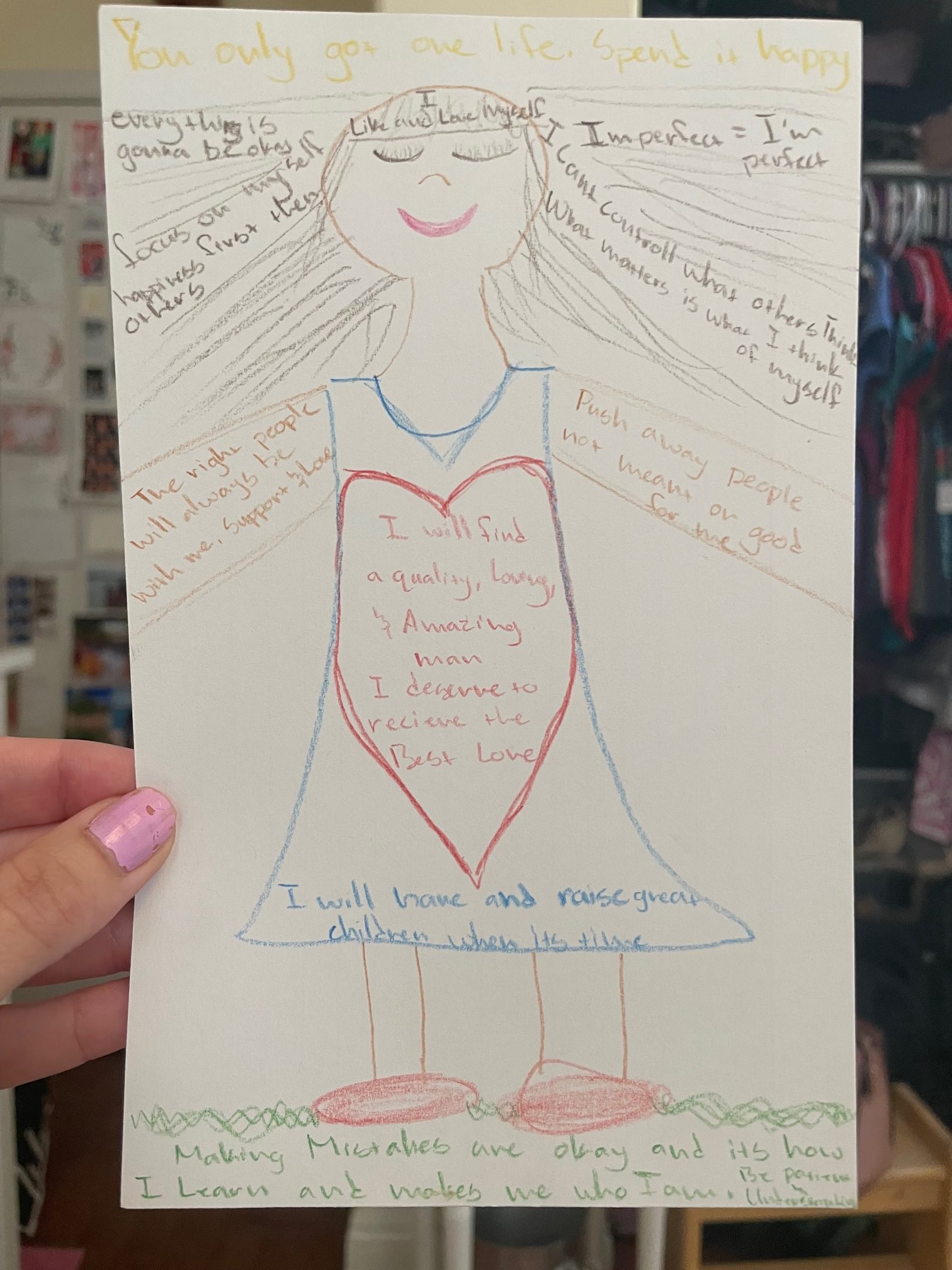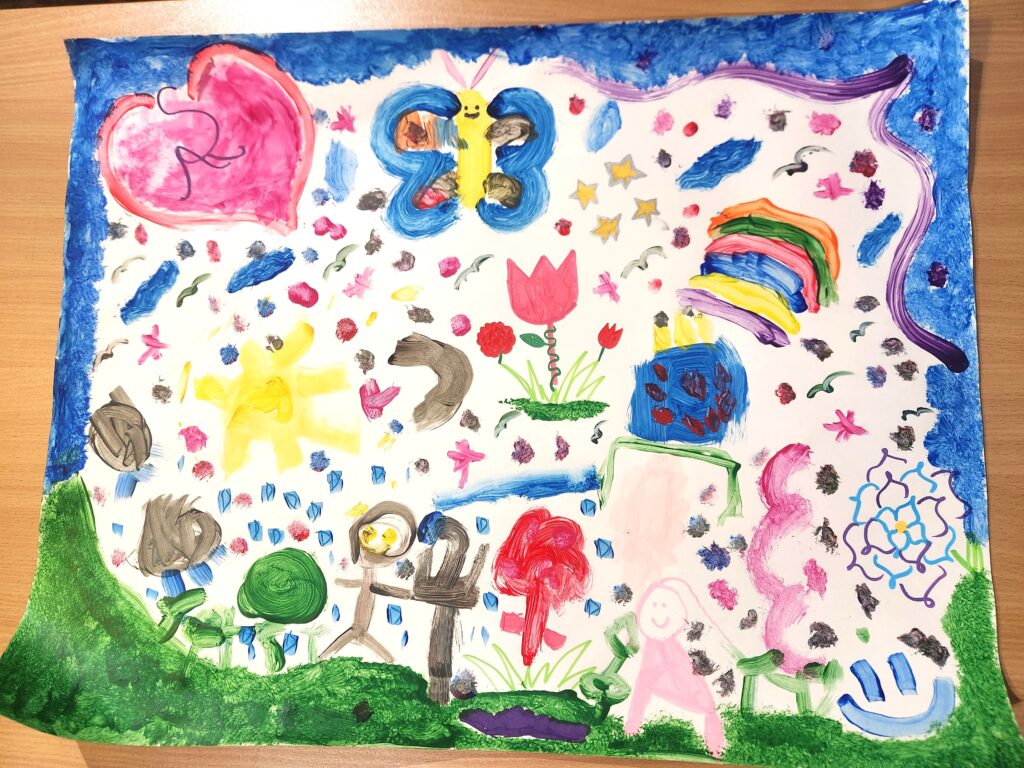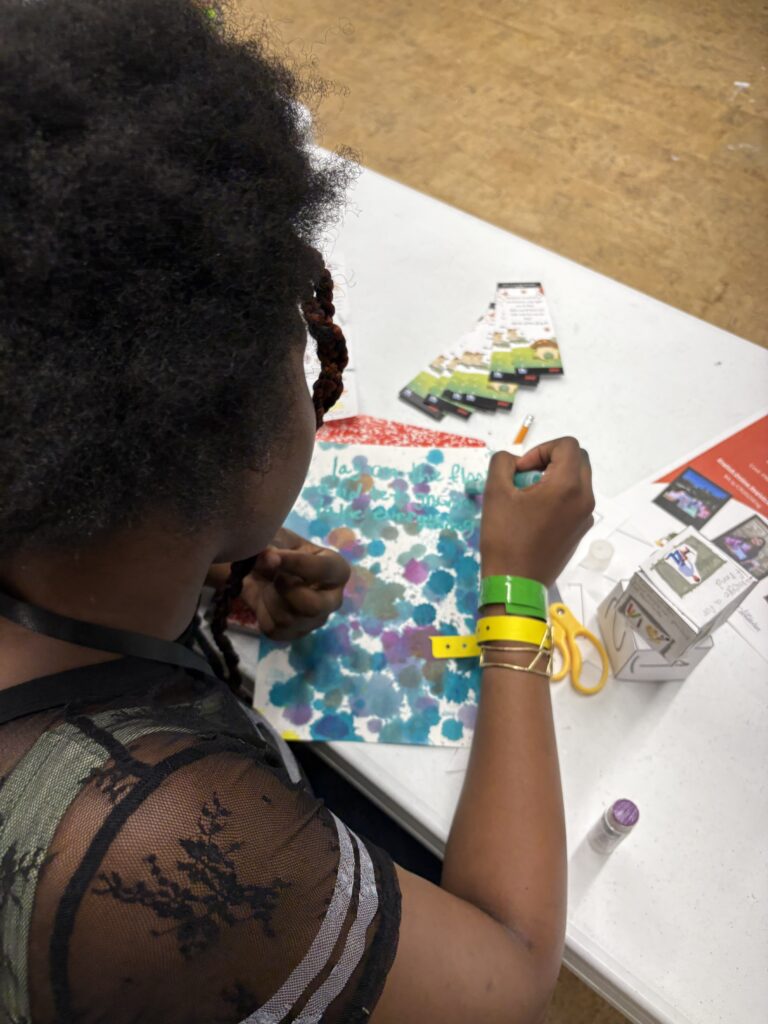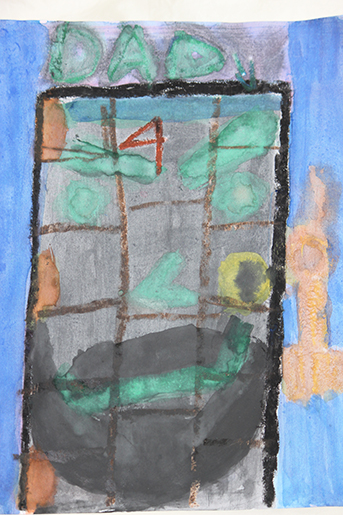I felt compelled to share this story because the impact was so big for this client that she ended up creating an extension of this workshop on her own that I really liked and wanted to share.
My client is a 28-year-old female who currently resides at home with her mother and her younger siblings. She works as an ultrasound tech and loves what she does, but has come to therapy to address some personal issues that are affecting her daily life functioning. She struggles a lot with anxiety surrounding finding a partner while she is still young, starting a family of her own, finding acceptance from others (friends, partners, her dad), feeling wanted, worthy, valued, and needed. “Claiming Who I Am” was the perfect activity to do with her because although she is capable of coming up with positive affirmations about herself, her struggle is truly believing them.
Through this workshop the client was able to process and challenge these negative thoughts together with the therapist and came up with a beautiful image that depicted how she wants to feel about herself.
Additionally on her own, she created an extra piece depicting a graveyard where she “laid her negative thoughts to rest.” She even put a gate around the graveyard with a lock on it and a sign that read, You can visit but can’t stay. This was symbolic for her as she was able to acknowledge her negative thoughts and still validate her feelings, but also realize that there is a way to put those to rest and focus more on the positive things in her life.
This very much resonated with me and I was moved by her art. This was a piece that I felt should be shared with others and I love that she went above and beyond the workshop instructions and added her own personal touch and symbolism that meant something to her.
